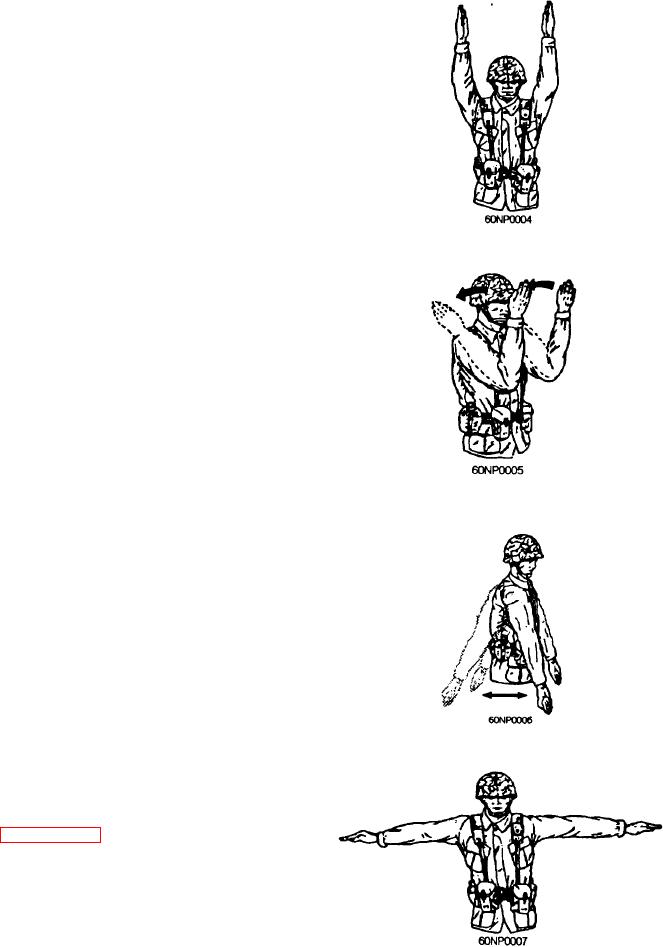
The aircraft would then execute a 90-degree turn
to the left.
LANDING SIGNALMAN
ENLISTED (LSE) SIGNALS
Once the pilot has located the LZ, you can now
help the pilot land the helicopter. These signals are
visual arm-and-hand signals used by personnel to
"talk" to the pilot of the landing helicopter. The
confidence of the pilot in the LSE's signals depends
on the precise manner in which the LSE gives the
Figure 3-5.--Prepare for guidance.
signal. Movements are sharp and precise. LSE's
signals are executed exactly as prescribed. The LSE
must always remain alert for signals from the pilot.
During night operations, LSEs must use illuminated
wands. During a landing approach, the LSE's
functions areas follows:
1. Inform the pilot of the approaching helicopter
that you are the LSE. You do this by means of the
Prepare for Guidance signal.
2. Indicate the landing point to the pilot by
positioning yourself 25 meters in front of and 10 meters
to the right of the landing point as the pilot looks at it.
Figure 3-6.--Forward.
3. Aid the pilot in landing safely on the landing
point. The pilot is responsible for the approach and
landing of the helicopter. However, the pilot relies
heavily on the LSE to provide warning of conditions of
which he or she is not aware of and to direct the
helicopter to a safe landing point.
4. The only signal that the LSE must give to the
pilot on the deck is the Wave-Off signal. All other
signals are advisory signals to the pilot. The decision
to acceptor reject the signal is solely the responsibility
of the pilot. Responsibility for the safety of the aircraft
can never be relinquished to the LSE. The Wave-Off
Figure 3-7.--Backward.
signal is given when it is not safe for the helicopter to
land.
5. Indicate to the pilot when it is safe to take off.
NOTE: Figures 3-5 through 3-14 are Initial
Terminal Guidance LSE signals that are standard
throughout the Marine Corps. Any misunderstandings
that may arise about signals are clarified by close
coordination with the supporting helicopter unit. The
signals are used for daytime operations. Signals given
at night are executed in the same manner except that
Figure 3-8.--Hover.
an illuminated amber director's wand (Chem Lite) is
held in each hand.

